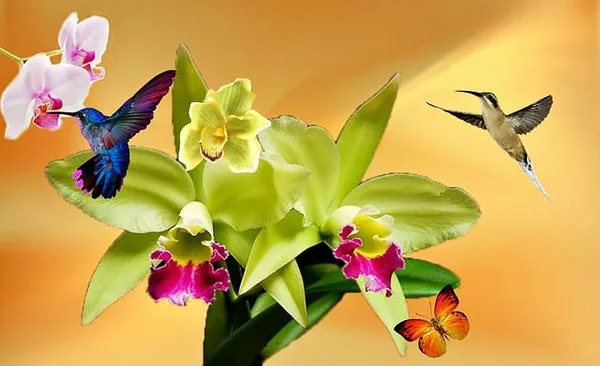In the intricate mosaic of Earth’s botanical kingdom, flowering plants stand as nature’s masterpieces, captivating our senses with their vibrant colors, alluring scents, and intricate structures. These botanical wonders, known scientifically as angiosperms, constitute the most diverse and widespread group of plants on our planet. From the delicate petals of a rose to the majestic blooms of a magnolia tree, flowering plants enrich our landscapes and ecosystems in ways that are both visually stunning and ecologically crucial.
Angiosperms: A Triumph of Evolution
Flowering plants belong to the division Angiospermae, which translates to “vessel seeds” in Greek, aptly capturing the essence of their reproductive structure. Angiosperms have evolved over millions of years to develop a unique reproductive system that involves the production of flowers. These flowers serve as complex structures designed to facilitate pollination and the subsequent formation of fruits, which house and protect the developing seeds. This innovative reproductive strategy has propelled angiosperms to become the dominant group of plants across the globe.
The Anatomy of a Flower
At the heart of the allure of flowering plants lies the intricate architecture of their flowers. A typical flower comprises several key components, each with a distinct role in the plant’s reproductive cycle. The colorful petals, often the most visually captivating part of the flower, function to attract pollinators such as insects, birds, and even mammals. The male reproductive organ, known as the stamen, consists of the anther and filament. The anther is responsible for producing pollen, the plant’s male gametes. The female reproductive organ, the pistil or carpel, comprises the stigma, style, and ovary. The stigma serves as the landing platform for pollen, and the ovary houses the ovules, which will eventually mature into seeds upon successful fertilization.
The Role of Pollination
The process of pollination, facilitated by a diverse array of pollinators, is essential for the reproduction of flowering plants. When a pollinator visits a flower to collect nectar or pollen, it inadvertently transfers pollen from the anther to the stigma. This initiates fertilization, leading to the development of seeds within the ovary. The interdependence between flowering plants and their pollinators is a testament to the intricate web of ecological relationships that sustain our ecosystems.
The Diversity of Flowering Plants
Flowering plants exhibit remarkable diversity in terms of their size, shape, color, and habitat preferences. From towering trees to delicate wildflowers, they thrive in a multitude of environments, ranging from lush rainforests to arid deserts. Botanists classify angiosperms into two main categories: monocots and dicots. Monocots, such as lilies and grasses, have a single cotyledon (seed leaf) when germinating, while dicots, like roses and sunflowers, have two cotyledons. This classification aids in understanding the evolutionary relationships and characteristics of different plant species.
Cultivating Culture and Science
Beyond their ecological significance, flowering plants hold immense cultural and economic value. They have been cherished by humans for centuries for their role in celebrations, traditions, and artistic expressions. From the symbolism of the rose in poetry to the sacred lotus in religious rituals, flowering plants resonate deeply in human culture. Furthermore, angiosperms contribute to various industries, including horticulture, agriculture, and medicine. Many of the fruits, vegetables, and grains that form the backbone of human diets are products of flowering plants.
Challenges and Conservation
While the world of flowering plants is a source of wonder, it also faces challenges in the form of habitat loss, pollution, and climate change. The conservation of native plant species is vital for maintaining biodiversity, supporting ecosystems, and ensuring the survival of various pollinator species. Efforts to protect and restore natural habitats play a crucial role in safeguarding the beauty and diversity of flowering plants for generations to come.
In Conclusion
Flowering plants, or angiosperms, represent a triumph of evolution, showcasing the intricate interplay between form and function in the natural world. Their captivating blooms and ingenious reproductive strategies underscore the brilliance of nature’s design. From pollination to seed dispersal, they contribute to the vitality of ecosystems and human culture. By understanding and appreciating the complexities of flowering plants, we can foster a deeper connection with the natural world and contribute to their preservation for the enrichment of future generations.


